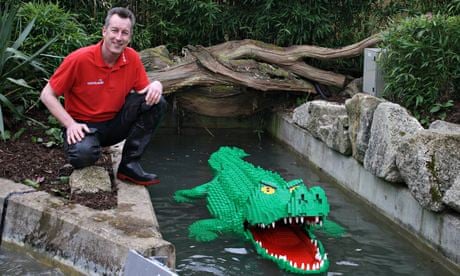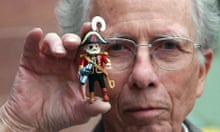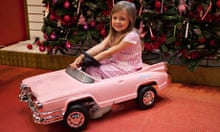When David Fautley takes his work home with him his children don't complain – they join in, because Fautley is a Lego modeller. "We did Dortmund football stadium in Germany last January which needed 3,000 mini-figures, so I had the boys and five of their friends come round for three nights after school to complete it. With slices of pizza going round, you can imagine they thought it was fantastic."
Fautley has worked at Legoland in Windsor since its launch in 1996. Originally his job involved bringing to life the moving elements of the park. "I was an animation engineer responsible for all the pneumatic moving parts and motorised systems," he says. "I used to work for British Gas and with my technical skills and experience, I did the plumbing for the fountains in mini Trafalgar Square."
Fautley went to Legoland with a background in physics and design and technology from his school days and a gas engineering qualification. During the selection process for his later move into model-making, he was given a bunch of bricks and asked to create anything he wanted. This led to a crocodile. "It was partly to do with the fact that I had lots of green bricks," he says. That crocodile has been scaled up approximately 10 times the size now for the park.
Fautley now spends his days erecting world landmarks, extinct species and most recently a horse made up of 250,000 bricks weighing in at 300kg. On average it will take six weeks to get the model off paper, assembled and positioned in the park where Fautley assists through to the end.
"The horse was put together and positioned by six people due to its weight. Similarly, when I made a dinosaur many were at hand to assemble him. It was minus five degrees and snowing on the day we fitted him. He came on the back of a truck in three parts, so you can imagine the reaction through the streets of Windsor. I went inside the dinosaur's belly for several claustrophobic hours to bolt him together," he says.
You could mistake Fautley's workspace for that of an architect with sketches hanging off boards, geometric paper spread across his desk and photographs of landmark sites. The only difference is the extracting arm winding down from the ceiling which takes the glue fumes safely away. Each brick is carefully and delicately glued together so that a model can withstand the relentless prodding and the weather. The squared paper he works on is known as Lego knob paper, where each square represents a brick to help build up the scale.
Fautley and other model makers have nicknames for the bricks beyond their product description: "We've got some that we refer to as Daleks, jumpers, and others we call washing machines."
A degree in some form of fine art and design is needed to get into model making. Architects are very much welcomed as are sign makers. While there isn't a specific set of qualifications needed, you will need to know your way around industrial and 3D design. It also helps to be a jack-of-all-trades to overlap and help with the wider team on the sound, water, electrical controls and the models of the park.
The most important thing is to have an interest and above all a passion for the bricks because Lego is quite difficult to work – you're working with defined pieces and you can't cut anything. Prototyping a really hard building is the most rewarding part of the job.
"Sometimes is can be laborious when trolling through the internet to find the right images and having to work out the amount of bricks you need which are out of stock and will take months to get here because they're a special element," he says.
Fautley's next project is the Gillette football stadium in the US to tie in with the NFL season starting in August. Fautley rarely goes on site to see what he has to recreate – research photographs are enough to get a sense of the shape and dimension. "It is very useful to be there in person however, because you can pick up on the ambience and the geography around it," he says.
Recreating the Gillette stadium's curved profile uses skills harnessed from junior level. "When you first come to Legoland as a junior model maker you have to build a sphere to get a handle of shape construction to be able to make heads in the future," he says. "It's said that if you can master that challenge you can do anything."









Comments (…)
Sign in or create your Guardian account to join the discussion